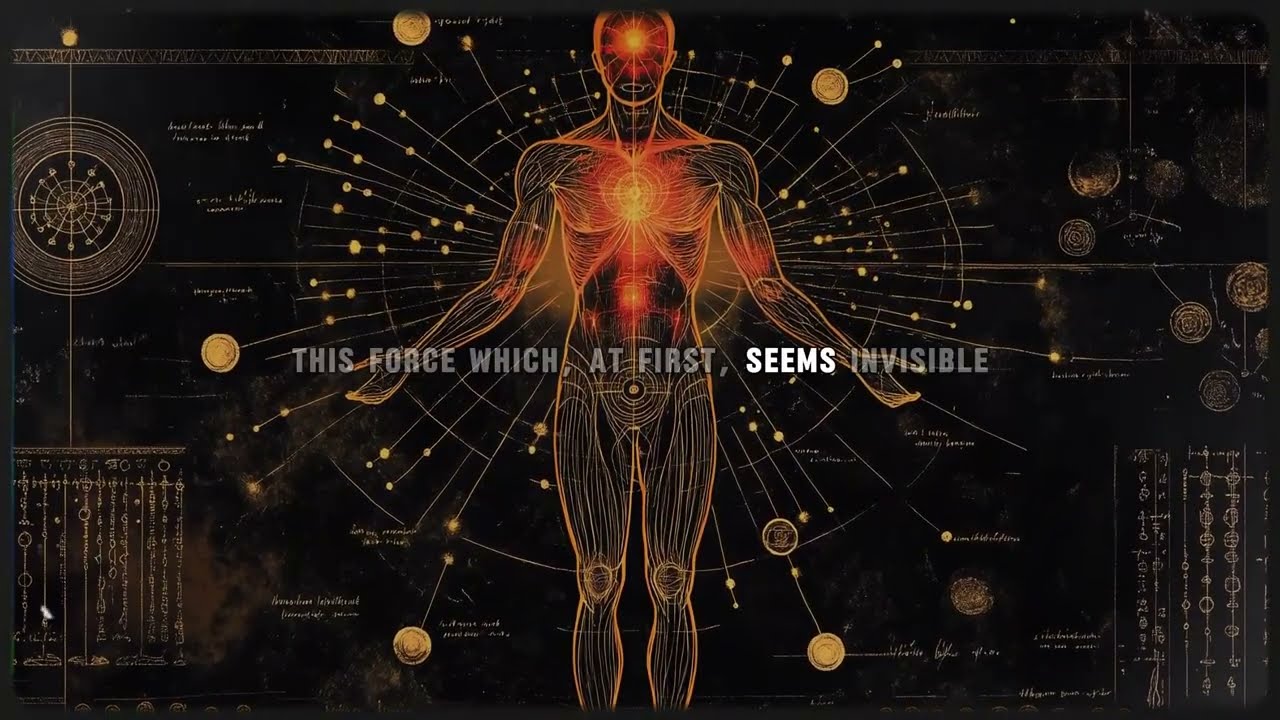Embarking on the first steps in energy control is a crucial move for anyone looking to reduce their environmental footprint, lower utility bills, and promote sustainable living. This article serves as a comprehensive guide for beginners, breaking down the essential processes into manageable stages. By focusing on the keyword “first steps in energy control,” we explore practical strategies that lay the groundwork for long-term energy efficiency, empowering readers to make informed decisions and foster habits that contribute to a greener future.
Grasping the Basics of Energy Control

Before diving into practical applications, it’s vital to build a solid understanding of energy control as a concept. This foundational knowledge equips beginners with the mindset needed to approach energy management holistically. Energy control isn’t just about flipping switches or buying efficient appliances; it’s a multifaceted approach that involves awareness, strategy, and continuous improvement. By mastering these basics, individuals can transition from passive consumers to active stewards of energy, setting the stage for more advanced techniques.
Defining Energy Control and Its Importance

Energy control refers to the systematic management of how energy is used, conserved, and optimized in various settings, such as homes, offices, or industries. At its core, it encompasses reducing unnecessary consumption, minimizing waste, and maximizing efficiency to achieve economic and environmental benefits.
For instance, in a household context, energy control might involve monitoring electricity usage during peak hours to avoid high costs, or in a business setting, it could mean implementing lighting systems that automatically adjust based on occupancy. This practice is not merely a trend but a necessity in today’s world, where global energy demands are soaring and resources are finite.
According to data from the International Energy Agency, energy efficiency measures could reduce global energy consumption by up to 12% by 2040, highlighting the potential impact of starting small. By taking the first steps in energy control, individuals contribute to broader goals like combating climate change and promoting energy security.
Moreover, energy control fosters a sense of responsibility and empowerment. When people understand that simple actions, like unplugging devices or choosing energy-efficient products, can lead to tangible savings—such as reducing annual electricity bills by 10-15%—they are more motivated to engage. This initial awareness phase is critical, as it transforms abstract concepts into actionable insights, paving the way for sustained behavioral changes.
The Science Behind Energy Consumption
Understanding the science of energy consumption involves grasping how energy flows through systems and where losses occur. Energy is neither created nor destroyed but can be transformed and wasted through inefficiencies, such as heat loss in poorly insulated buildings or energy dissipation in outdated appliances.
For example, in residential settings, a significant portion of energy is lost through windows, doors, and walls that lack proper insulation. This not only increases heating and cooling costs but also contributes to higher carbon emissions. By learning about these principles, beginners can identify “energy vampires”—devices that draw power even when not in use, like chargers or smart TVs on standby mode.
Delving deeper, concepts like kilowatt-hours (kWh) and energy ratings become essential tools. A kWh measures the amount of energy used over time, helping users track consumption patterns. For instance, knowing that a typical refrigerator uses about 100-200 kWh per month allows for better budgeting and decision-making. This scientific foundation enables individuals to make data-driven choices, such as selecting appliances with high Energy Star ratings, which can cut energy use by 10-50% compared to standard models.
Ultimately, comprehending the science empowers people to view energy control as a science-based endeavor rather than a chore. It encourages experimentation, such as conducting simple tests to measure energy usage in different rooms, fostering a proactive approach that evolves with new knowledge and technology.
Common Myths and Misconceptions
Despite growing awareness, several myths surround energy control that can hinder progress. One common misconception is that energy-saving measures are expensive and only yield long-term benefits, deterring beginners from starting. In reality, many first steps in energy control, like switching to LED bulbs or sealing drafts, require minimal investment and can pay off quickly through reduced utility bills.
Another myth is that energy control is solely an environmental issue, overlooking its economic advantages. For businesses, implementing basic controls can lead to significant cost savings; for example, optimizing HVAC systems might reduce energy expenses by 20-30% annually. Addressing these myths head-on helps demystify the process, making it accessible to all.
Furthermore, some believe that individual efforts are insignificant in the face of global energy challenges. Yet, collective small actions can create substantial change—consider that if every household in a city adopted basic energy controls, it could collectively reduce carbon emissions equivalent to removing thousands of cars from the road. By debunking these misconceptions, beginners can approach energy control with confidence, understanding that their first steps contribute to a larger movement toward sustainability.
This clarity not only motivates action but also builds resilience against skepticism, ensuring that the journey into energy management is informed and effective.
Performing an Initial Energy Assessment


An initial energy assessment is a critical component of the first steps in energy control, serving as a diagnostic tool to uncover inefficiencies and set baselines for improvement. This process involves a thorough examination of energy usage patterns, identifying areas of waste, and prioritizing actions based on potential savings. By conducting this assessment, beginners can gain valuable insights into their consumption habits, making the transition to energy control more targeted and effective.
Gathering Baseline Data on Energy Use
The first phase of an energy assessment begins with collecting data on current energy consumption. This involves reviewing utility bills, noting average monthly kWh usage, and identifying trends over time, such as seasonal spikes in heating or cooling demands.
For example, a household might discover that their energy use jumps by 30% in winter due to inefficient heating systems, prompting further investigation. Tools like energy monitoring apps or smart meters can provide real-time data, offering a more granular view than traditional billing cycles.
Once data is gathered, it’s essential to categorize consumption by source—electricity, gas, water—to pinpoint high-impact areas. This step not only quantifies energy use but also fosters awareness, encouraging users to question habits like leaving lights on unnecessarily. By establishing a clear baseline, individuals can
Performing an Initial Energy Assessment


An initial energy assessment is a critical component of the first steps in energy control, serving as a diagnostic tool to uncover inefficiencies and set baselines for improvement. This process involves a thorough examination of energy usage patterns, identifying areas of waste, and prioritizing actions based on potential savings. By conducting this assessment, beginners can gain valuable insights into their consumption habits, making the transition to energy control more targeted and effective.
Gathering Baseline Data on Energy Use
The first phase of an energy assessment begins with collecting data on current energy consumption. This involves reviewing utility bills, noting average monthly kWh usage, and identifying trends over time, such as seasonal spikes in heating or cooling demands.
For example, a household might discover that their energy use jumps by 30% in winter due to inefficient heating systems, prompting further investigation. Tools like energy monitoring apps or smart meters can provide real-time data, offering a more granular view than traditional billing cycles.
Once data is gathered, it’s essential to categorize consumption by source—electricity, gas, water—to pinpoint high-impact areas. This step not only quantifies energy use but also fosters awareness, encouraging users to question habits like leaving lights on unnecessarily. By establishing a clear baseline, individuals can focus their energy-saving efforts on specific areas where they can make the most significant impact.
Moreover, taking into account the temporality of energy usage helps in strategizing future improvements. For instance, if heavy energy consumption occurs during peak hours, one might consider shifting usage to off-peak times when rates are lower. This awareness transforms previously abstract concepts into concrete action points, effectively highlighting how small changes can lead to meaningful savings.
Identifying Energy-Wasting Areas
After gathering baseline data, the next step involves identifying energy-wasting areas within the home or business environment. This could include anything from outdated appliances to poorly insulated spaces that lose heat in winter.
Conducting a walk-through of the premises can unveil hidden inefficiencies. Common areas to examine include:
- Heating and Cooling Systems:
- Check if HVAC systems are running efficiently.
- Look for leaks in ducts and ensure filters are clean.
- Appliances:
- Assess older appliances against newer, energy-efficient models.
- Identify “energy vampires,” devices that consume power even when turned off.
- Lighting:
- Determine if natural light can be utilized more effectively.
- Consider switching to LED lighting for substantial energy savings.
By systematically addressing these common culprits, one can create a prioritized list of modifications that can yield the highest return on investment. Each identified area not only represents wasted energy but also signifies an opportunity to implement changes that enhance efficiency and reduce costs.
Additionally, seeking professional help for a detailed energy audit can provide deeper insights. Experts often use thermal imaging, blower door tests, and other tools to detect issues that may not be visible to the naked eye. This sort of comprehensive analysis can illuminate underlying problems that, once resolved, can significantly lower energy consumption.
Setting Goals for Energy Efficiency Improvements
Once energy-wasting areas have been identified, it’s crucial to set measurable goals for improvement. This not only provides a clear path forward but also allows individuals or businesses to track their progress over time.
Setting SMART goals—Specific, Measurable, Achievable, Relevant, and Time-bound—can make the process manageable. For example, instead of vaguely aiming to be “more energy-efficient,” a specific goal might be: “Reduce electricity consumption by 15% over the next six months.”
Breaking down larger goals into smaller milestones helps keep motivation levels high. If the primary goal focuses on overall consumption reduction, an interim target might involve replacing eight incandescent bulbs with LEDs within two months, which can lead to immediate savings.
Furthermore, documenting progress through periodic assessments reinforces accountability. Calculating savings achieved at each milestone encourages continued commitment to energy efficiency. Such an approach not only builds confidence but also turns energy conservation into a rewarding journey rather than a burdensome task.
Additionally, sharing goals with family members or coworkers can foster collective responsibility. When everyone is aware of the targets, it creates an atmosphere of cooperation, ensuring that energy-saving habits become ingrained rather than isolated behaviors.
Implementing Energy Control Measures

With a solid understanding of current energy use and clear objectives established, the next natural step is implementing energy control measures. These measures can range from simple lifestyle adjustments to advanced technology solutions aimed at enhancing energy efficiency.
Simple Changes That Make a Big Impact
Making small, straightforward changes can lead to substantial energy savings without requiring extensive investments. These changes often involve habits and practices that can be adopted easily by anyone looking to save on energy bills.
- Turn Off Unused Devices:
- Encourage a habit of switching off lights and electronics when not in use.
- Utilize power strips for easy access to turn off multiple devices simultaneously.
- Optimize Heating and Cooling:
- Regularly adjust thermostats; setting the thermostat a few degrees lower in winter and higher in summer can result in significant savings.
- Employ ceiling fans to circulate air effectively, reducing heating and cooling needs.
- Enhance Insulation:
- Seal drafts around windows and doors to minimize heat loss.
- Invest in thick curtains or window films to improve insulation without major renovations.
These minor adjustments contribute to reduced energy consumption, showcasing that effective energy management does not require monumental shifts. Instead, it is often about nurturing conscientious habits over time.
Investing in Energy-Efficient Products
While simple changes are commendable, there are instances where investing in energy-efficient products yields long-term benefits. Upgrading appliances and systems can drastically reduce energy use, providing both ecological and financial rewards.
- Energy Star Appliances:
- Opt for appliances certified by ENERGY STAR, which meet strict energy efficiency guidelines.
- These products can use 10-50% less energy compared to standard models, resulting in lowered utility bills.
- Smart Thermostats:
- Implement smart thermostat technology that learns user behavior and optimizes energy settings accordingly.
- These devices can manage heating and cooling more efficiently, cutting costs typically associated with manual controls.
- LED Lighting:
- Transitioning to LED lighting reduces energy consumption dramatically while lasting up to 25 times longer than traditional bulbs.
- This change not only lowers electricity bills but also decreases the frequency of bulb replacements.
Investing in these technologies might require upfront costs, but the long-term savings coupled with potential rebates or incentives available can offset the initial expenditure. Individuals must think of these purchases as investments in sustainable living rather than mere expenses.
Utilizing Smart Technology for Energy Management
The rise of smart technology has revolutionized energy control, offering innovative ways to monitor and manage consumption. From smart home systems to energy management software, these tools empower users to take charge of their energy usage proactively.
- Home Automation Systems:
- Smart home devices allow for scheduling, remote control, and automation of lighting, heating, and cooling.
- These systems can optimize energy use based on occupancy patterns, reducing waste significantly.
- Energy Monitoring Apps:
- Many applications provide real-time feedback on energy use, helping users adjust behaviors instantly.
- Users can set alerts for peak usage or receive tips tailored to their consumption patterns.
- Solar Panel Integration:
- Exploring renewable energy options, such as solar panels, can greatly reduce reliance on traditional energy sources.
- By generating clean energy, households can decrease their carbon footprint while enjoying significant cost savings.
Integrating smart technology into energy management strategies not only enhances efficiency but also adds a layer of convenience. As users grow accustomed to these systems, they often find themselves gravitating toward more sustainable behaviors, driven by data and the ability to visualize their impact.
Conclusion

Taking the initial steps toward energy control is not merely an individual endeavor but part of a larger movement to promote sustainability and resource conservation. By understanding the science behind energy consumption, dispelling common myths, performing thorough energy assessments, and implementing targeted control measures, beginners can make a significant difference in their energy usage patterns.
From simple actions like turning off unused lights to investing in energy-efficient products and utilizing smart technology, every small change contributes to a larger goal of reducing energy waste. This journey is empowering—transforming consumers into proactive stewards of their energy resources. As awareness grows and efforts to conserve energy accelerate, the broader implications for environmental sustainability and economic resilience become increasingly evident.
Ultimately, committing to energy control is about recognizing the power of individual choices and embracing the responsibility we all share in safeguarding our planet’s future. By starting today, we can collectively shape a more sustainable tomorrow.

GIPHY App Key not set. Please check settings